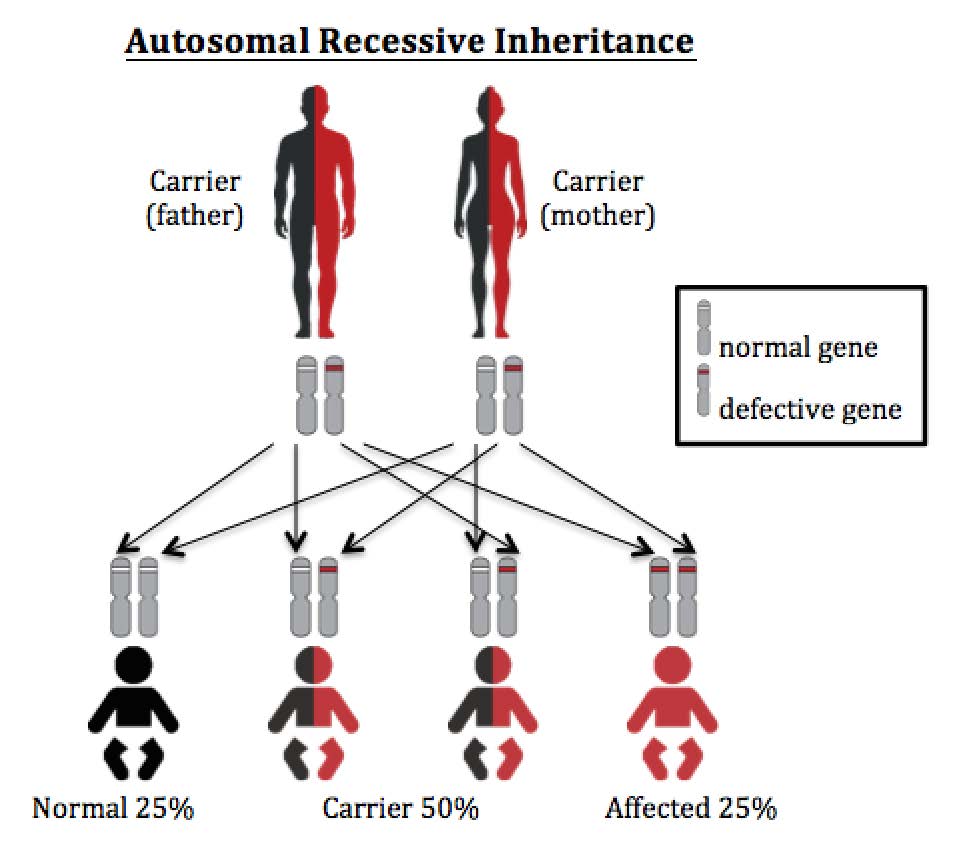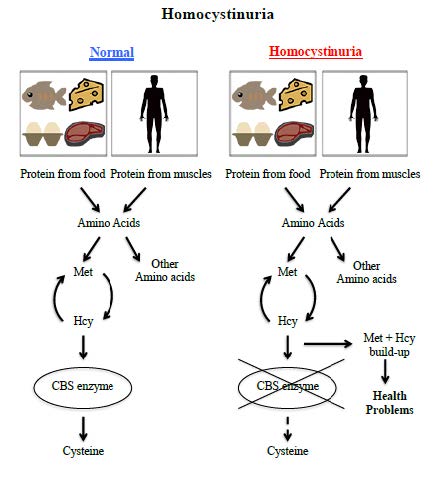
Homocystinuria is an amino acid disorder. People with amino acid disorders cannot process amino acids, the building blocks of protein.
In order for the body to use protein from the food we eat, it is broken down into smaller parts called amino acids. Special enzymes then make changes to the amino acids so the body can use them.
Homocystinuria occurs when an enzyme called "cystathionine β-synthase" (CBS) is either missing or not working properly. The role of CBS enzyme is to break down methionine. When the CBS enzyme is not working correctly, its activity will be reduced. The conversion of amino acid methionine and homocysteine to cysteine will be disrupted. As a result, the harmful build-up of homocysteine and methionine in the blood cause health problems.

Met = Methionine
Hcy = Homocysteine
The original graphic is converted into the following text version for your easy access to the information.
Homocystinuria
Our body breaks down protein in food into amino acids when we eat and breaks down protein in our muscles into amino acids during prolonged fasting and stress. When functioning normally, our body will make Cystathionine β-synthase (CBS enzyme) to help to convert amino acids methionine and homocysteine to cysteine through a multi-step process for further use in the body. Methionine is the only source of homocysteine. In people with HCU, CBS enzyme is either missing or not working properly, making the methionine and homocysteine cannot be metabolised properly. As a result, methionine and homocysteine will build up in the body to harmful levels, causing serious health problems.
Everybody has two copies of genes, one from each parent, which tell the body how to make specific enzymes.
Homocystinuria is an autosomal recessive disease. Only when babies inherit two faulty copies of the gene for homocystinuria from parents, the enzyme made does not work properly or is not even made at all.

The original graphic is converted in to the following text version for your easy access to the information.
Autosomal recessive inheritance
In autosomal recessive diseases, people with two faulty copies of gene (one from father and one from mother) will develop symptoms. People with only one faulty copy of gene are normal and they are called disease carriers. Homocystinuria is inherited in autosomal recessive manner.
If both parents are Homocystinuria carriers, for each pregnancy (no matter it is a baby boy or girl), there is a 25% (1 in 4) chance that the child has 2 copies of normal gene (who is not affected), a 50% (1 in 2) chance that the child has one normal and one faulty gene who is a carrier like the parents, and a 25% (1 in 4) chance that the child has two copies of faulty gene who is at risk for Homocystinuria.
Babies with homocystinuria often appear healthy at birth. However, if the condition is not treated, symptoms can appear in early infancy. Symptoms vary from person to person – some people have very mild symptoms. The symptoms can be controlled with timely treatment.
The treatment aims to reduce and normalise homocysteine levels and prevent health problems.
If you are worried that your baby is ill, it is important to follow medical advice. Bring your baby to your local accident and emergency department immediately. Take the prescribed medication, special infant formula and any information that you have been given about homocystinuria, including this pamphlet, to the hospital with you.
For general queries on Newborn Screening Programme for Inborn Errors of Metabolism, please call 5741 4280 (Department of Clinical Genetics, Hospital Authority)
July 2024
Hospital Authority